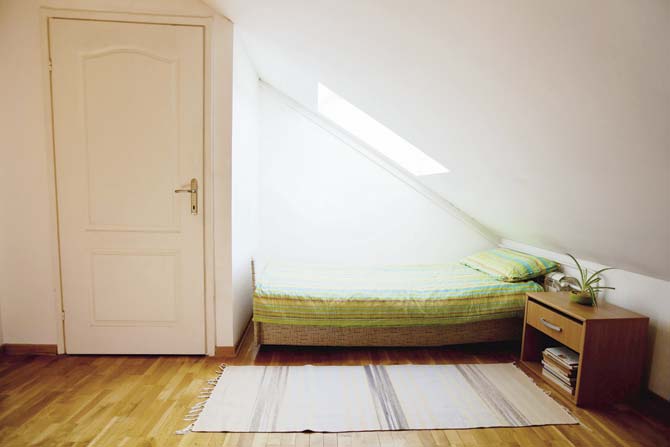As a working woman in Mumbai in the mid-1980s, options of where to live if you were an out-of-towner were limited

 As a working woman in Mumbai in the mid-1980s, options of where to live if you were an out-of-towner were limited. Salaries were low and rents were high. Even “servants’ quarters” in fancy buildings that still had those anachronisms, were affordable only to those at the top of the food chain. You paid what would have been at least five times my first salary to get a room that had no floor space once the bed and cupboard had been factored in. Bankers lived in these.
As a working woman in Mumbai in the mid-1980s, options of where to live if you were an out-of-towner were limited. Salaries were low and rents were high. Even “servants’ quarters” in fancy buildings that still had those anachronisms, were affordable only to those at the top of the food chain. You paid what would have been at least five times my first salary to get a room that had no floor space once the bed and cupboard had been factored in. Bankers lived in these.
ADVERTISEMENT

In the mid-1980s, options of where to live in Mumbai were limited. Salaries were low and rents were high. You paid what would have been at least five times my first salary to get a room that had no floor space once the bed and cupboard had been factored in. Representation pic/Thinkstock
The rest of us did the rounds. The YWCA in Colaba where I spent a happy year. The hostel in Byculla which was a bit daunting with its grill doors and dead curtains. The one in Bandra which was mainly for air-hostesses and so far away from work when offices were still in south Mumbai. Standing in line to get into Government Law College so you could sneak into the students’ hostel on Marine Drive. Servants’ rooms in not-so-fancy buildings. One was so strict that we were not even allowed drinking water. We did not last a week.
But the Holy Grail was always the Women’s Graduate Union Hostel in Colaba. You had to be a graduate to qualify for a room but you also had to wait your turn. Hey, we were used to waiting — a telephone connection took years in those days, remember. For me, it took six months of cooking eggs every night on a hotplate in a plush room on Carmichael Road thanks to hard work by my parents — but it cost me most of my salary to
commute.
The WGU hostel was not like any of the others. The formidable but kind-hearted warden Miss Frances kept her eagle eye on everyone but for all that it was a hostel, you were treated like an adult. It was understood that you might have to work late. Or have a social life. The rules were sensible rather than plain suspicious and silly. And the food! Any hostelite anywhere in the world will tell you that you become like a manipulative ravenous loon whenever a chance of free food arises. Relatives you have avoided your whole life became best friends if a free meal was on offer. Until you came to stay at the WGU hostel. Here, the food was so good that you invited friends over for a meal. Also, because it was so civilised that you could.
With its comfortable rooms, its sensible arrangements and its clean surroundings, it is hardly surprising that the WGU hostel became home and an integral part of our lives to so many of us. So much so, that author, columnist and former hostelite Rupa Gulab even wrote her first novel, Girl Alone based on it. The list of former inmates reads like a who’s who of women in media today. The bankers and corporate types were in posh Cuffe Parade servants’ quarters, remember?
This year, this cherished Mumbai institution celebrates 100 years. The Women’s Graduate Union came together to help girls and women establish themselves and have a voice. The hostel is 40 years old. But there is a lot more to the WGU than a hostel. It also runs balwadis, study centres for underprivileged children, scholarships for students, meeting places for senior citizens and a variety of similar initiatives to keep pace with a changing world. In spite of its influential members and these “Look at me me me” times, however, the WGU has been refreshingly low-key about the way it functions. And that is why a centenary celebration is all the more worthwhile.
There are two abiding Mumbai memories that I always carry from those years at the WGU. The first is the sound of buses docking into the Colaba bus station across the road. And the other is the smell of fish from the Sassoon Docks on the other side.
And the odd thing is that even if you could get rid of both of them, you wouldn’t really want to. No, really. These are smells and sounds of home.
Ranjona Banerji is a senior journalist. You can follow her on twitter @ranjona
 Subscribe today by clicking the link and stay updated with the latest news!" Click here!
Subscribe today by clicking the link and stay updated with the latest news!" Click here!






